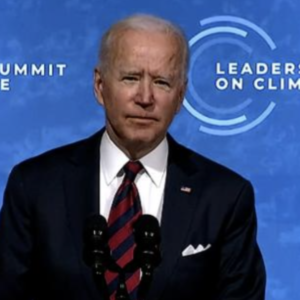The worldwide energy shortage is a hot issue in America because the cost of gasoline has shot to in excess of $5 per gallon, with comparable increases in other energy prices. While Americans will find this situation inconvenient, the energy shortage will have catastrophic consequences in other countries.
We are facing a summer of brownouts because of subsidies to unreliable solar and wind energy and the closure of nuclear and other reliable sources of electricity.
American public policy is responsible. As a recent Washington Post report points out, during the first 17 months of President Biden’s administration, we have added or propose to add nearly 100 pro-alternative and anti-conventional energy policies.
The administration has also annulled energy-friendly policies and aims to overturn more, starting with a directionally predictable but ineffectual scattershot of government regulations aimed at carbon emissions. The hodgepodge commences with subsidies for green, unionized companies supporting the cancellation of the Keystone XL Pipeline and termination of oil and gas leases to an Office of Environmental Justice and funding for domestic battery manufacturing, among many others currently the domain of lower-cost producers.
The administration’s policies are designed to fulfill the president’s promise at a campaign stop in New Castle, N.H., where he said, “I guarantee you we’re going to end fossil fuels.”
One is almost forced to ask is this really aimed at fulfilling this end of fossil fuel pledge.
In these times of high energy prices, how are investors in traditional fuels likely to react? Crude oil output fell about 25 percent in the six months of COVID lockdown but recovered only by less than half that amount, with some marginal producers unlikely to ever return.
Federal policy and expected policy changes are responsible. While President Biden notes that companies have many permits to explore for oil and natural gas, he fails to note numerous hurdles from the permit stage to production. Oil companies are responding to higher prices as well. The number of oil and gas rigs increased by 60 percent in the past year, but firms and, more important, skilled workers have moved on to other occupations. In addition, the oil and gas industries are uncertain about their beneficial tax expenditures, which were removed from the administration’s proposed 2022 budget. Finally, the oil-drilling industry is not exempt from worldwide supply chain issues.
Investors too are cautious because the petroleum industry has lost money in four of the last 10 years. With interest rates increasing, any investment will have to promise a larger return to exceed the higher hurdle rate. Entering oil companies’ calculations will be the uncountable subsidies for solar and wind power. These power-generation methods present their own challenges and are unlikely to fulfill their promises.
Americans should also account for the sourcing of solar photovoltaic module production. In 2020, China accounted for 70 percent of global production, with the United States accounting for 3 percent. Unless the fundamentals of solar photovoltaic module manufacturing changes, their production in the United States is problematic at best. One would find similar results for batteries and wind turbines, with seven of the top 10 producers of turbines being in China.
Given the current domestic political landscape with environmental concerns trumping energy shortages, Biden is attempting to make up the shortfalls in American production by turning to other countries with whom the current administration has had less than cordial relations. These nations include the sanctioned Venezuela, Saudi Arabia (Biden asserted that the Saudis are “the pariah (with) very little social redeeming value.”
He further threatened to hold them accountable for the murders of children and innocent people.
No progress has been made on any of these fronts.
Our policies have removed American oil supplies with which we could have assisted our allies in Europe who have not been able to do without Russian energy supplies and are dutifully providing the Russians with rubles. According to the Bank of Russia, the current account surplus of the balance of payments of the Russian Federation in the first four months of 2022 is $95.8 billion (3.5 times higher than the comparable period of 2021).
The administration’s energy and environmental policies have intersected to create the perfect storm for America’s position as a world leader in energy and potentially everywhere else.


